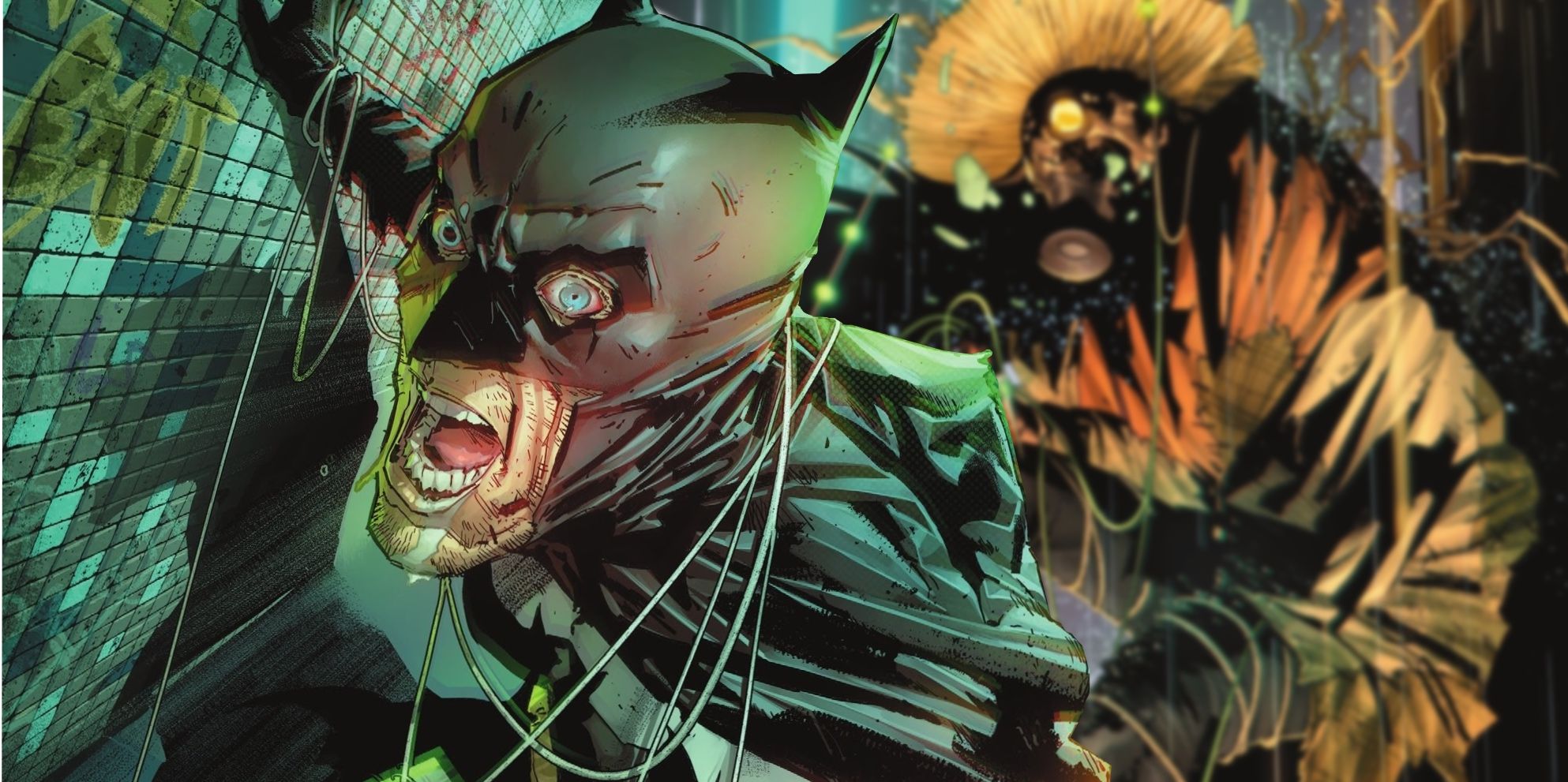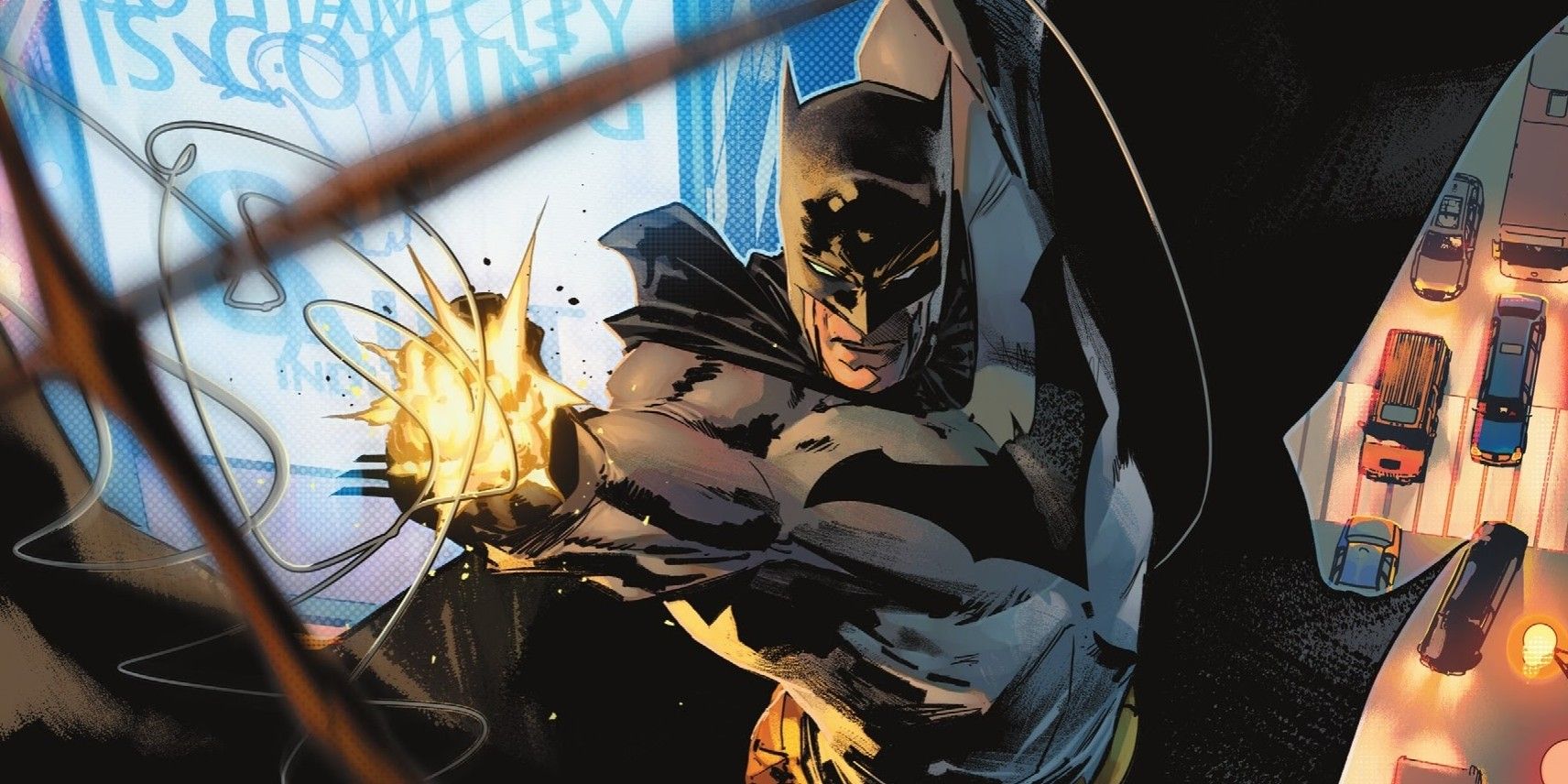Warning: spoilers for Batman #114 are ahead.
The legacy that Batman leaves behind in Gotham City is a fiercely-debated subject across his publication history in DC Comics, and it now enters a new phase with the event, Fear State. With someone as flawed as Bruce Wayne at the helm, Batman's impact on the city has not been entirely black or white. While his resources as a billionaire combined with his deep emotional turbulence have led him down many dark paths before, Bruce Wayne still possesses a commitment to doing good for city when no one else wants to. His dealings with Gotham's criminal underground have been an ultimate test of whether a good man can succumb to the darkness of his environment, or remain true to his goals.
The ongoing Fear State event has brought to light the significance behind Batman's core elements as a character, namely, the tactics he uses in Gotham City. As Scarecrow seeks to gain control of Gotham through fostering an environment of terror and distrust known as the Fear State, Batman is battling everyone from the anti-vigilante Mayor Nakano to industrialist Simon Saint and his Peacekeeper program to stop his city's descent into chaos. With fear being the most base element of Bruce Wayne's decision to become Batman, a discussion of fear's role in Gotham City necessitates a critical examination of the impact that he has had on his city. And while this is far from the first time that fear has been used to explore Batman's identity, Fear State is leading towards a conclusive decision on whether Batman's legacy on Gotham City has been as a hero, or as a villain.
While the stakes of Fear State as an event initially seemed low, due to the fact that fans already read about Gotham's probable road ahead in Future State earlier this year, its broader implications for Batman as a character make it an important decider on what years of the Dark Knight's mythos have been building to. Essentially, Fear State is forcing Batman to reap the seeds he had sown when he first became the Caped Crusader, thereby constructing an identity around fear. By now fighting the spread of fear in Gotham City, Batman must reckon with the fact that he himself contributed to this environment that Scarecrow is taking advantage of. Fear is an easy villain for superheroes to go up against, but for Batman, it is much more complicated given its use in his persona as a vigilante. In this sense, the best question that Fear State is asking both Batman and fans is whether or not fear can ever really be used for heroic purposes.
As a character sworn to never use guns, Batman's most reliable weapon in Gotham City is the terror he invokes in common criminals. Aside from his wealth, Batman's power as a vigilante is found in fear. For the most part, Batman's villains leave this aspect about his methods unchallenged, with the exception of Scarecrow, whose narrative purpose has always been to throw Batman's terrifying affect back at him. While this is certainly taking place again in Fear State, the conflict between Scarecrow and Batman this time around questions the latter's identity as a hero as Bruce is forced to consider the sociological effect of fear in society. With Peacekeeper-01 currently rampaging across the city in Batman #114 under the influence of Scarecrow, Batman must now deal with the corrosive consequences of his persona in a much more visceral sense (written by James Tynion IV, art by Jorge Jimenez, colors by Tomeu Morey, letters by Clayton Cowles).
Because Batman derives his power from the same feeling that villains like the Joker and Scarecrow seek to create in Gotham City, his identity as a hero becomes much harder to prove. In this sense, Fear State is less of an event and more of a mirror in which Batman must recognize himself in if he is truly committed to making Gotham a better place. Fear State's question of whether or not fear can be used as an instrument for good will finally settle Batman's longest-standing tension–is he Gotham's greatest hero, or its greatest agitator?


